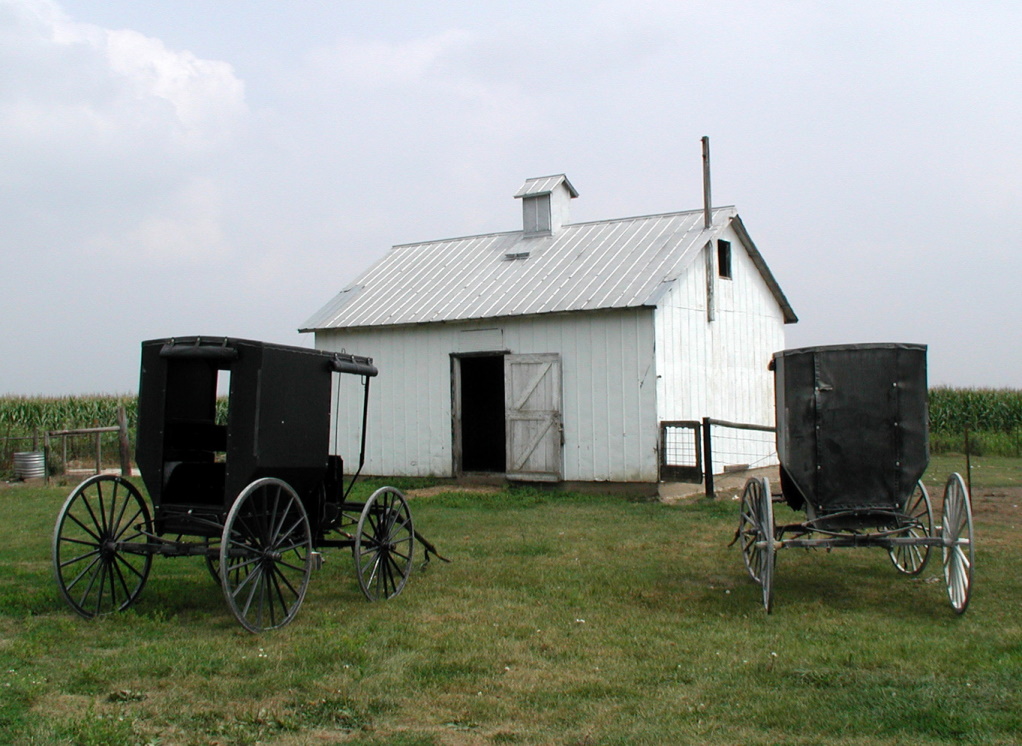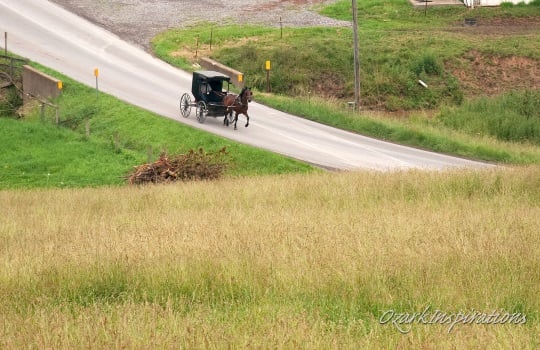Amish Ask Supreme Court To Hear “Gray Water” Case
Four Amishmen have asked the highest court in the land to consider their case, in a long-running dispute over “gray water” disposal. Attorney Brian Lipford filed the petition on behalf of Amish members of a Minnesota Swartzentruber community. Via the Rochester Post-Bulletin:
In a petition filed on Jan. 20, 2021, by attorney Brian Lipford, Ammon Swartzentruber, Menno Mast, Amos Mast and Sam Miller ask the high court to consider two questions under the Religious Land Use and Institutionalized Persons Act: Does the government have a compelling interest in regulating the disposal of “gray water,” which includes laundry, bath and dishwater; and, is a septic system the least restrictive method when 20 states allow mulch basin systems?
“This rejection of modern technology is critical to their way of life; if they are forced to choose between their beliefs and the farms that provide their livelihood, they will choose their beliefs,” the petition states. “That is the choice the government is forcing upon them.”
This matter dates to 2006, when a compliance inspection was performed on the Amish homes in Fillmore County. The issue re-emerged in 2013, and after years of back-and-forth, the Amish filed a suit in 2017, in which they lost both the original case and the subsequent appeal.

Naturally, people wonder why the Amish in this case have objected to the point of filing a lawsuit, which Amish as a rule rarely do. I wrote this on the news of the original case:
Amish in certain places have put their feet down when a government requirement attempts to force adoption of a practice or device which goes against their Ordnung or just their sense of staying within their tried and true ways. You saw this in the objections over smoke detectors which played out in New York and Wisconsin. Amish in Hardin County, Ohio were long embroiled in controversy over outhouses and waste disposal. In January, a Pennsylvania Amish family lost a court battle over connecting to an electric-powered municipal sewer system.
It usually doesn’t go to the level of the Amish initiating a lawsuit. But apparently the Amish in questions saw that as the lesser of the two evils. Amish in theory (and in practice, for the most part) do not file lawsuits as they see them as violating their stance of non-resistance.
So why take that monumental step of filing a lawsuit? Perhaps the Amish here fear that if they give in on one item, then more change and gradual erosion of their way of life, communities and churches is sure to follow. Perhaps they resent being told to change by outsiders. Perhaps the new system makes no sense to them. Perhaps it’s a mix of many things.
Karen Johnson-Weiner, who served as an expert witness for the Amish plaintiffs in the original case, gave us further context in a 2019 Q-and-A. Here she is discussing why they have taken such a strong stand:
For the Swartzentrubers, the installation of septic tanks constituted a change that was incompatible with their religious beliefs. It’s difficult for non-Amish to understand, but the change that installing septic systems would make in Swartzentruber life was, to Amish eyes, considerable.
It’s not the expense or the size of the tank that they objected to (although Fillmore County requires a larger tank than the state does); rather it is the departure from a way of life sanctified by tradition. Various community members told me that since God’s laws don’t change, those who follow them shouldn’t either.
Others suggested that installing septic tanks for gray water was the first step down a slippery slope, and that if they made this change, they would soon be called on to make others. Finally, more than one suggested that “Ordnung came first,” and that the State was being unfair in suggesting that a new law should take precedence over Ordnungs tested by time.
The Amish were willing to seek a compromise, an alternative method of waste water disposal that would meet government goals without requiring a change in lifestyle that would violate religious beliefs. At the trial, an expert witness on gray water disposal, Dr. Laura Allen, testified to the efficacy of a “mulch” system currently in use in many of the western states. The Amish indicated their willingness to use this system, and several had already begun using it. Despite its widespread acceptance, however, the mulch system was not acceptable to the authorities.
The men asked the U.S. Supreme Court to hear the case after they were declined by the Minnesota Supreme Court. Two religious organizations – The Jewish Coalition for Religious Liberty and the National Committee for Amish Religious Freedom – have since filed a brief backing the Amish petition. In the latest news, the Supreme Court asked the Minnesota Attorney General’s Office to respond to the petition.
The Supreme Court chooses to hear only 100-150 of the roughly 7,000 cases it’s asked to review annually, according to reporting by the Post-Bulletin.







Sympathy
Oh I can sympathize with these Amish. Minnesota has a leftist government intent on taking full control of citizen’s lives. I hope and pray that their suit will be successful and hold back the forces of evil that seek to impose their draconian rule over us.
Where is the proof of irreputable harm to the environment
I would like to see the proof that Fillmore County has to insist that gray water does irreputable harm to the environment. I suspect that in the concentrations of single family use, the earth and its various elements has sufficient capacity to neutralize any phosphates, etc. introduced into the soil, and will not harm any ground water.
Gray Water
Is it possible for the Amish there to use holding tanks for the gray water? That’s what people around here do that have cottages on the ponds. They are very heavy duty plastic and are pumped out when full. Being over 100 years old, most have been converted to year round homes. Before this the ones that had indoor plumbing, it all lead to the pond ( not illegal at the time). Each cottage that didn’t have room for a regular septic system ( some on hills, or have ledge rock) has two tanks- one for actual sewerage and one for gray water. Most of the tanks are underground as much as possible but the tops are not covered up. There is a lid in the top that unscrews to pour water in it if you need to and for pumping out. This type of tank may be an option for their gray water since you can open it up to pour into it. The tanks are round and about eight feet wide. Don’t know how deep- maybe 10 or 12 feet?